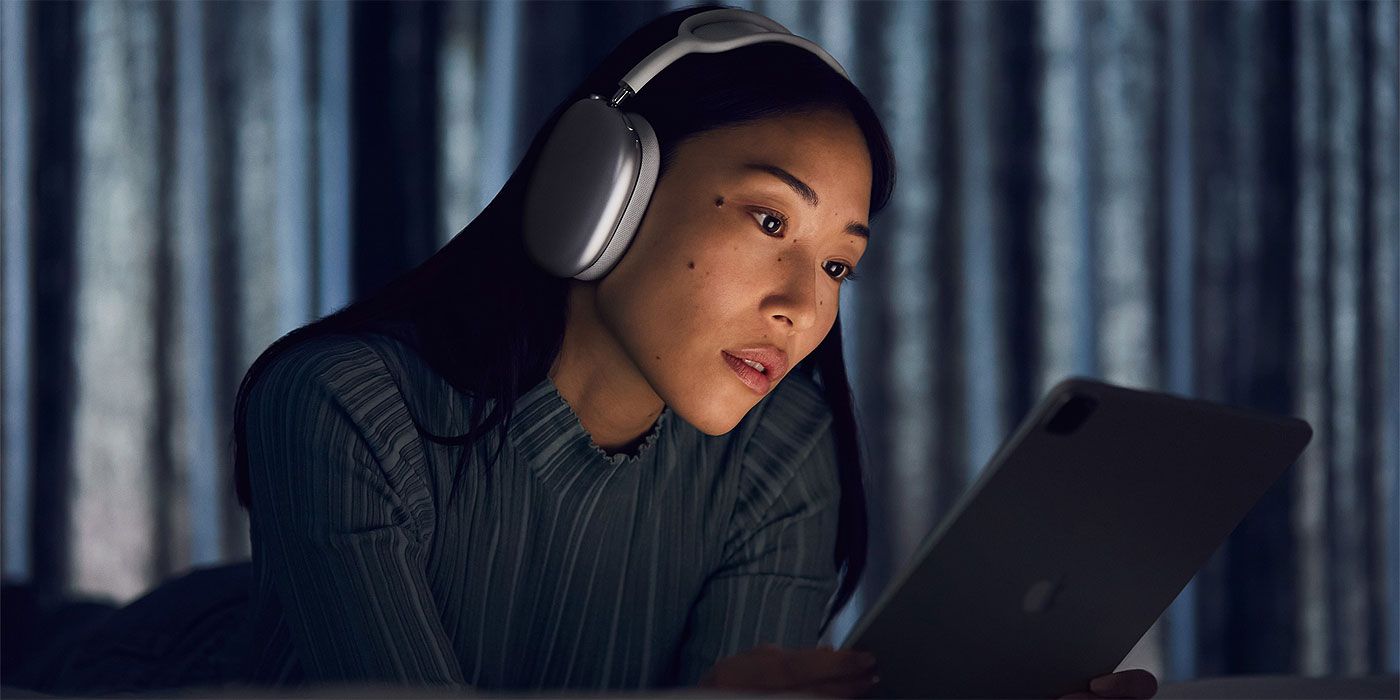
Just like the AirPods Pro, one of the selling points with Apple's new AirPods Max is a technology called spatial audio. Essentially, the feature lets users experience content with either 5.1, 7.1 or Dolby Atmos audio formats, but in a new and immersive way. The catch, is wearers will also need to be using select Apple devices to be able to achieve the improved sound quality and experience.
The AirPods Max were announced on December 8, 2020, are already available to buy, and cost $549.99. Besides spatial audio, the over-ear headphones also come with a number of main features, including an adaptive EQ and active noise cancellation. As to be expected with an Apple product, the AirPods Max come with a great level of support for many of the company's other products and Apple's ecosystem in general - they'll quite literally pair with any device that's signed in to a user's iCloud account.
According to Apple, its spatial audio technology works with AirPods Pro and AirPods Max when paired with an iPhone 7 or later. The support also includes third-generation (and later) iPad 12.9-inch models, iPad Pro 11-inch, third-generation iPad Air, sixth-generation (and newer) iPad models, and the fifth-generation iPad mini. These devices will also need to be running on iOS or iPadOS 14 or later, and will require audiovisual content from a supported app. As long as the right devices with the right software are in place, users will get the opportunity to listen to content aided by virtually immersive technology.

Spatial audio may be a fairly new technology, but it does add a great deal to the listening experience. Essentially, the spatial audio in the new AirPods Max uses dynamic head tracking to determine the motion of both a user's head and the device that the headphones are paired with. From there, the technology can make sure the sound is correctly placed within a virtual space. No matter how a user turns or moves their head, the virtual surround sound effect will remain accurate and anchored to the device itself.
The goal, as Apple describes it, is to create a more immersive experience and one that's similar to the environment a traditional home theater setup creates. The AirPods Max - and to an even greater extent, the AirPods Pro - face the physical limitations of smaller and, fewer, drivers. However, with spatial audio virtually recreating sound that provides an encompassing effect, far more users will have access to the kind of surround sound that adds an extra layer of enjoyment toto movies, TV, and more. Of course, it's not a cheap investment, and especially when considering the premium cost of the AirPods Max in addition to a compatible device like a newer iPhone or iPad Pro, but for Apple users who watch a lot of content on their mobile devices, these new headphones just might be worth it.
Source: Apple
from ScreenRant - Feed https://ift.tt/37skdsc

No comments: